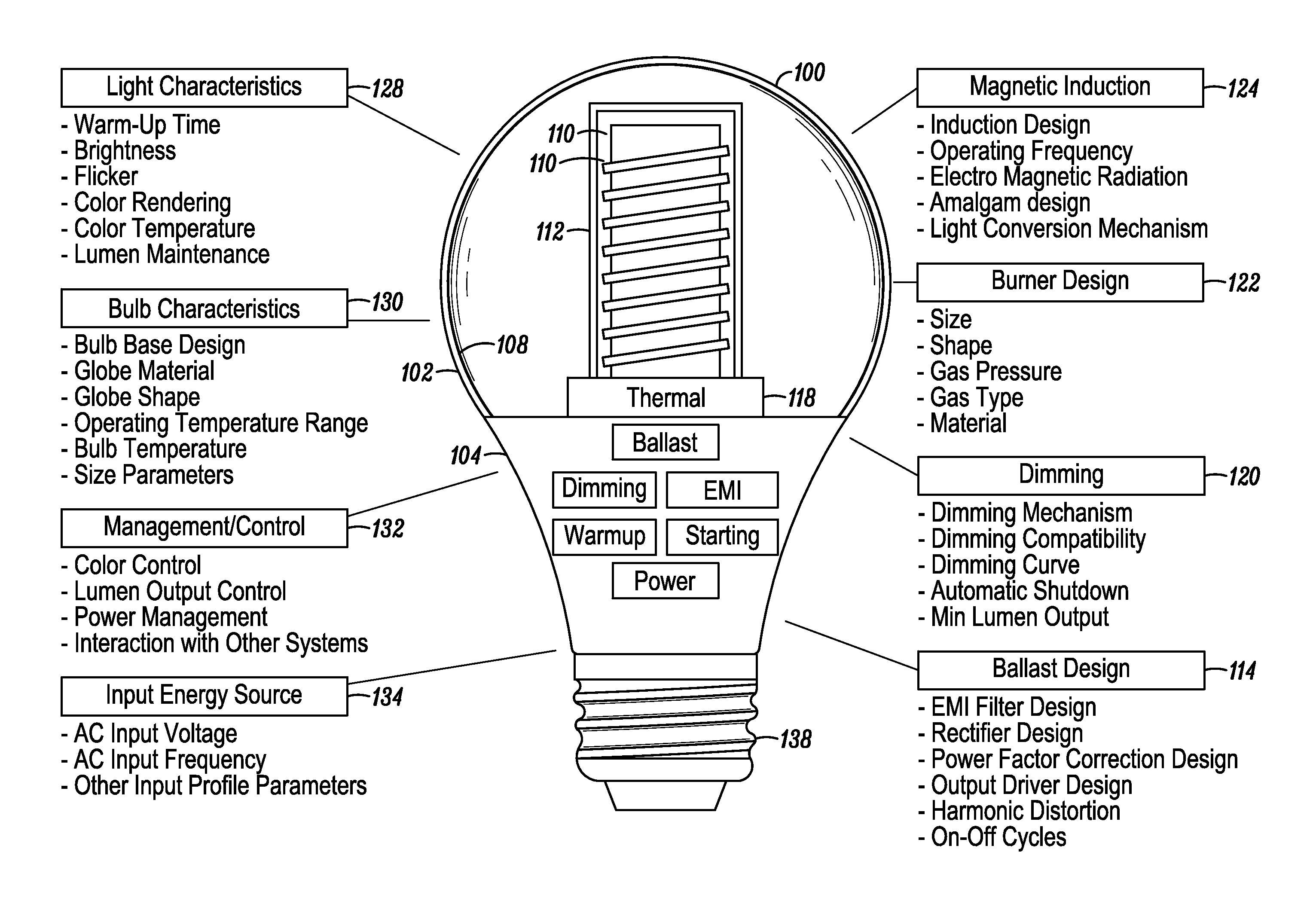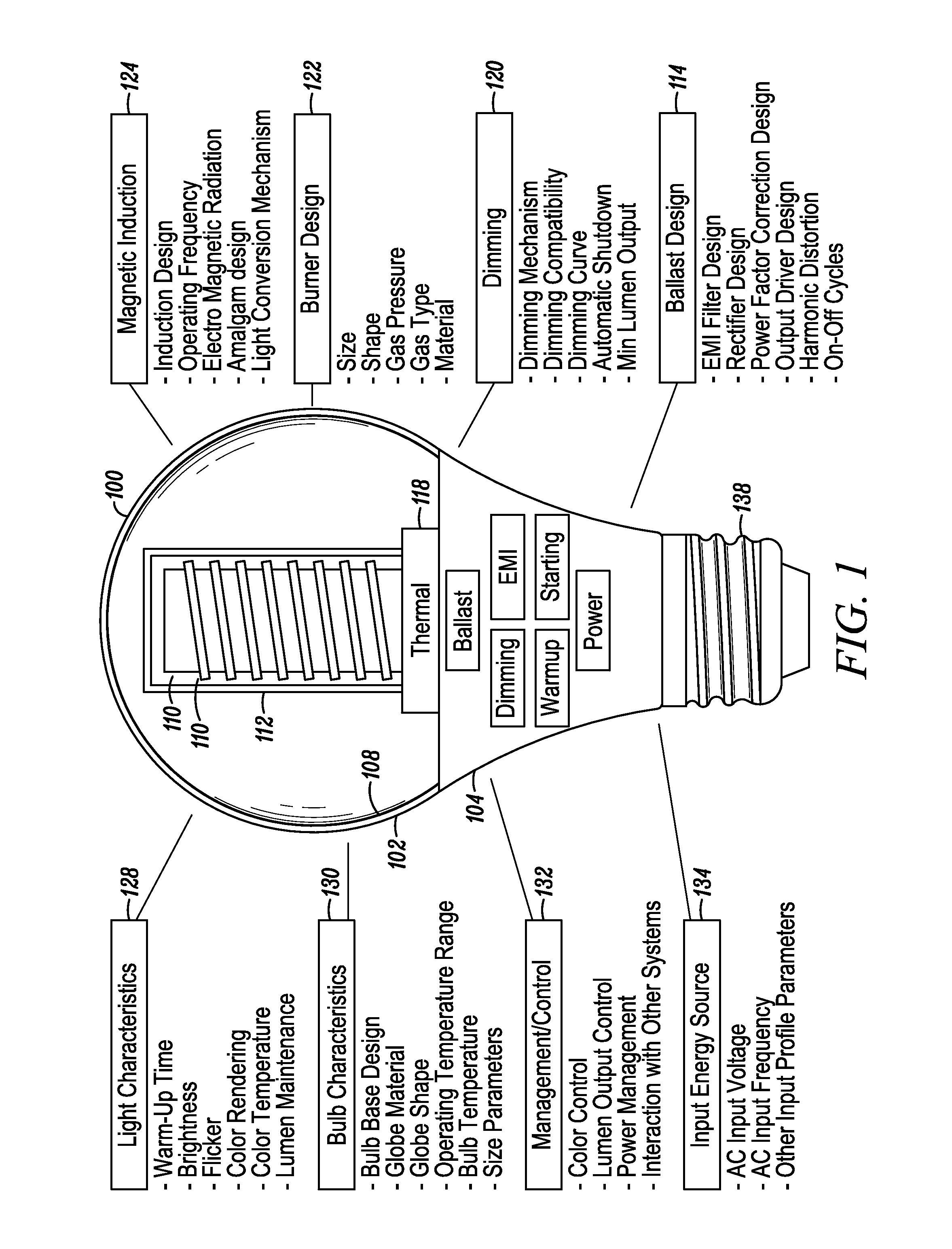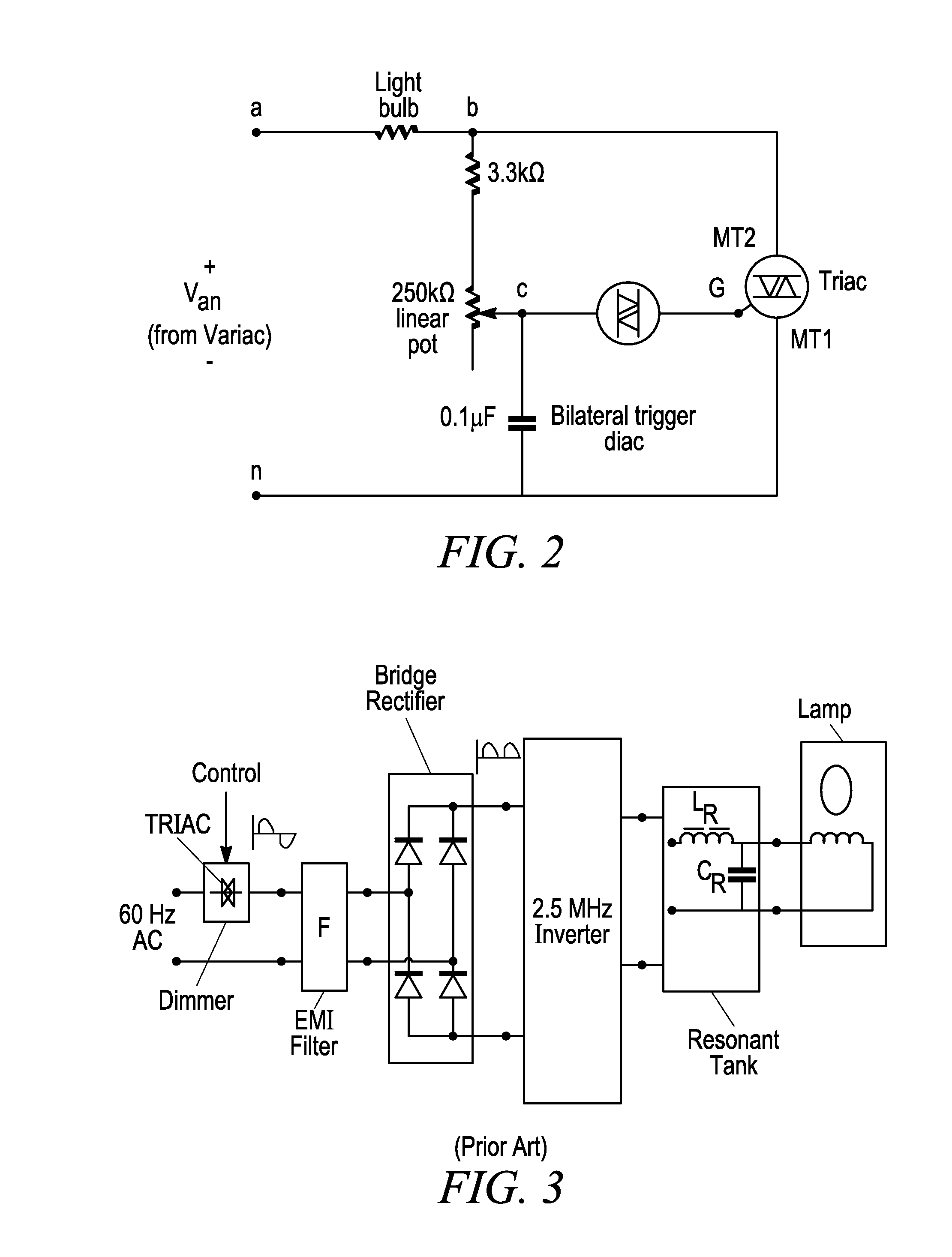RF induction lamp with isolation system for air-core power coupler
a technology of induction lamp and isolation system, which is applied in the field of induction lamps, can solve the problems of long, thin lamps, and inability to fit lamps designed to replace conventional incandescent lamps, and achieve the effects of preventing electrical shock, low impedance, and high impedan
- Summary
- Abstract
- Description
- Claims
- Application Information
AI Technical Summary
Benefits of technology
Problems solved by technology
Method used
Image
Examples
Embodiment Construction
[0046]An induction-driven electrodeless discharge lamp, here after referred to as an ‘induction lamp’, excites a gas within a lamp envelope through an electric field created by a time-varying magnetic field rather than through electrically conductive connections (such as electrodes) that physically protrude into the envelope. Since the electrodes are a limiting factor in the life of a lamp, eliminating them potentially extends the life that may be expected from the light source. In addition, because there are no metallic electrodes within the envelope, the burner design may employ higher efficiency materials that would otherwise react with the electrodes. Embodiments described herein disclose an inductor mounted inside a re-entrant cavity protruding upward within the burner envelope, where the inductor is at least one coil, which may be wound around a core of magnetizable material suitable for operation at the frequency of the time-varying magnetic field, such as ferrite or iron pow...
PUM
 Login to View More
Login to View More Abstract
Description
Claims
Application Information
 Login to View More
Login to View More - R&D
- Intellectual Property
- Life Sciences
- Materials
- Tech Scout
- Unparalleled Data Quality
- Higher Quality Content
- 60% Fewer Hallucinations
Browse by: Latest US Patents, China's latest patents, Technical Efficacy Thesaurus, Application Domain, Technology Topic, Popular Technical Reports.
© 2025 PatSnap. All rights reserved.Legal|Privacy policy|Modern Slavery Act Transparency Statement|Sitemap|About US| Contact US: help@patsnap.com



